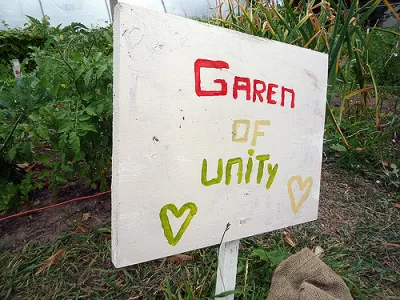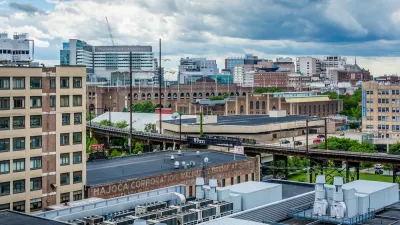Research from late 2021 documented the footprint of urban gardens in Detroit, finding evidence of inequities but not gentrification.

Pat Batcheller reports for WDET about research published in fall 2021 finding that urban gardens in Detroit don’t cause gentrification. Urban gardens do, however, tend to be found in more affluent neighborhoods, contributing to inequities in the city.
The research, published in the September issue of the journal Landscape and Urban Planning, used remote sensing, satellite imagery, and Google Streetview to locate 600 home and community gardens around the city, according to Batcheller.
“The study says that while urban gardens offer many benefits, they’re unequally distributed. That surprised [research co-author Jason Hawes] and his colleagues because Black Detroiters have led the urban gardening movement,” writes Batcheller.
What the research did not find is evidence that gardens contribute to gentrification. “Hawes says property values across the city are neither stable enough nor high enough to be affected by urban gardens,” reports Batcheller. “Instead, what they’re seeing is that as new folks come to town who are attracted to urban gardening, they’re reshaping the landscape by building new gardens, but not necessarily displacing people in communities that already had gardens.”
FULL STORY: Urban gardens don’t lead to gentrification in Detroit, study says

Alabama: Trump Terminates Settlements for Black Communities Harmed By Raw Sewage
Trump deemed the landmark civil rights agreement “illegal DEI and environmental justice policy.”

Planetizen Federal Action Tracker
A weekly monitor of how Trump’s orders and actions are impacting planners and planning in America.

The 120 Year Old Tiny Home Villages That Sheltered San Francisco’s Earthquake Refugees
More than a century ago, San Francisco mobilized to house thousands of residents displaced by the 1906 earthquake. Could their strategy offer a model for the present?

LA’s Tree Emergency Goes Beyond Vandalism
After a vandal destroyed dozens of downtown LA trees, Mayor Karen Bass vowed to replace them. Days later, she slashed the city’s tree budget.

Sacramento Leads Nation With Bus-Mounted Bike Lane Enforcement Cameras
The city is the first to use its bus-mounted traffic enforcement system to cite drivers who park or drive in bike lanes.

Seattle Voters Approve Social Housing Referendum
Voters approved a corporate tax to fund the city’s housing authority despite an opposition campaign funded by Amazon and Microsoft.
Urban Design for Planners 1: Software Tools
This six-course series explores essential urban design concepts using open source software and equips planners with the tools they need to participate fully in the urban design process.
Planning for Universal Design
Learn the tools for implementing Universal Design in planning regulations.
Ada County Highway District
Clanton & Associates, Inc.
Jessamine County Fiscal Court
Institute for Housing and Urban Development Studies (IHS)
City of Grandview
Harvard GSD Executive Education
Toledo-Lucas County Plan Commissions
Salt Lake City
NYU Wagner Graduate School of Public Service




























